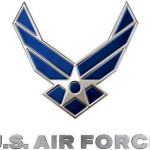- Industry: Military
- Number of terms: 1214
- Number of blossaries: 0
- Company Profile:
The United States Air Force (USAF) is the aerial warfare branch of the United States Armed Forces which was created under the National Security Act of 1947 signed President Harry S Truman. The Air Force ended a 40-year association with the U.S. Army to become a separate service two years after the ...
An air mobility operation specifically mounted to alleviate human suffering where responsible civil actors in an area are unable or unwilling to adequately support a population. It may precede, parallel, or complement the activity of specialized civil humanitarian organizations.
Industry:Military
A second, third, or nth-order effect created through an intermediate effect or causal linkage following a causal action. It may be physical, psychological, functional, or systemic in nature. It may be created in a cumulative, cascading, sequential, or parallel manner. An indirect effect is often delayed and typically is more difficult to recognize and assess than a direct effect.
Industry:Military
Denotes security assistance and other efforts to develop and sustain host-nation capabilities. It also establishes a distinction between security assistance and forms of support involving direct operational employment of US forces.
Industry:Military
Employment of capabilities to affect behaviors, protect operations, communicate commander’s intent, and project accurate information to achieve desired effects across the cognitive domain. These effects should result in differing behavior or a change in the adversary decision cycle, which aligns with the commander’s objectives.
Industry:Military
Information operations that protect and defend information and information systems by ensuring their availability, integrity, authentication, confidentiality, and non-repudiation. This includes providing for restoration of information systems by incorporating protection, detection, and reaction capabilities.
The Air Force prefers the DOD definition found in DODD 8500.1 “Measures that protect and defend information and information systems by ensuring their availability, integrity, authentication, confidentiality, and nonrepudiation. This includes providing for restoration of information systems by incorporating protection, detection, and reaction capabilities.
Industry:Military
An activity taken to manipulate or destroy an adversary’s information systems without visibly changing the physical entity within which it resides.
Industry:Military
The subset of information management with a supporting infrastructure that addresses awareness, access, and delivery of information. The primary mission is to provide the right information to the right person, in the right format, at the right place and time in accordance with commanders’ information dissemination policies while optimizing the use of information infrastructure resources. It involves the compilation, cataloging, caching, distribution, and retrieval of data; manages the information flow to users; and enables the execution of the commanders’ information dissemination policy.
Industry:Military
The integrated employment of the core capabilities of electronic warfare, computer network operations, psychological operations, military deception, and operations security, in concert with specified supporting and related capabilities, to influence, disrupt, corrupt or usurp adversarial human and automated decision making while protecting our own.
Information operations are the integrated employment of the core capabilities of influence operations, electronic warfare operations, network warfare operations, in concert with specified integrated control enablers, to influence, disrupt, corrupt or usurp adversarial human and automated decision making while protecting our own.
Industry:Military
That degree of dominance in the information domain which permits the conduct of operations without effective opposition. The Air Force prefers to cast ‘superiority’ as a state of relative advantage, not a capability, and views information superiority as: the degree of dominance in the information domain which allows friendly forces the ability to collect, control, exploit, and defend information without effective opposition.
Industry:Military
An umbrella term describing the suite of tools used for managing and processing information. These tools can include any communications device or computer, its ancillary equipment, software applications, and related supporting resources.
Industry:Military
